Dr. Nguyen Huu Manh - Deputy Head of the Faculty of History, University of Social Sciences and Humanities (Vietnam National University, Hanoi) chaired the excavation, along with leaders of the Department of Culture, Sports and Tourism, and the Provincial Museum co-chaired the reporting session.
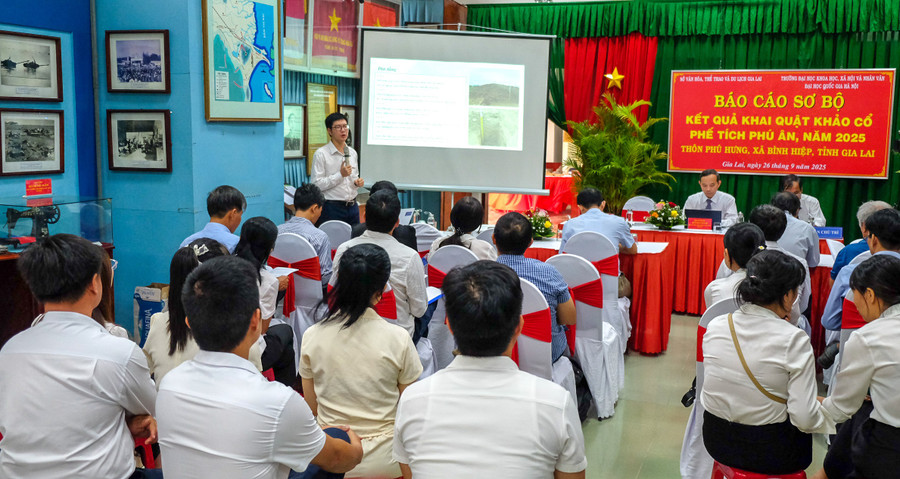
According to the preliminary report, the archaeological excavation at the Phu An tower ruins (Phu Hung village, Binh Hiep commune, Gia Lai province) was carried out by Gia Lai Provincial Museum in coordination with the University of Social Sciences and Humanities (Vietnam National University, Hanoi ) from June 11 to July 30, 2025 on an area of 300m². The excavation has brought remarkable results, contributing to clarifying the age and historical and cultural value of the Cham tower system in the Central region.
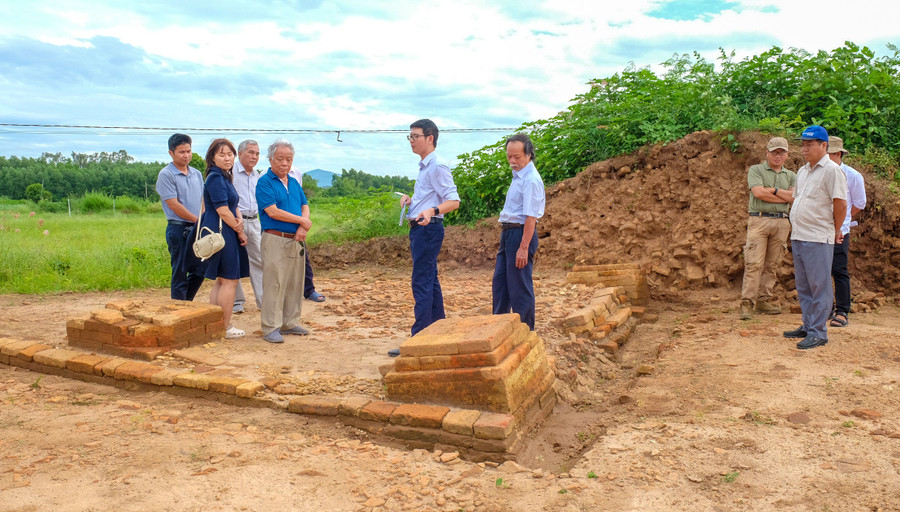
The results show that this area used to be a large-scale religious architectural complex, with many traces of foundations and thousands of artifacts discovered. In particular, in the stratigraphic layer and exposed relics, the excavation team recorded 6 architectural works including: brick foundation, brick walls, long house foundation with brick system, foundation...
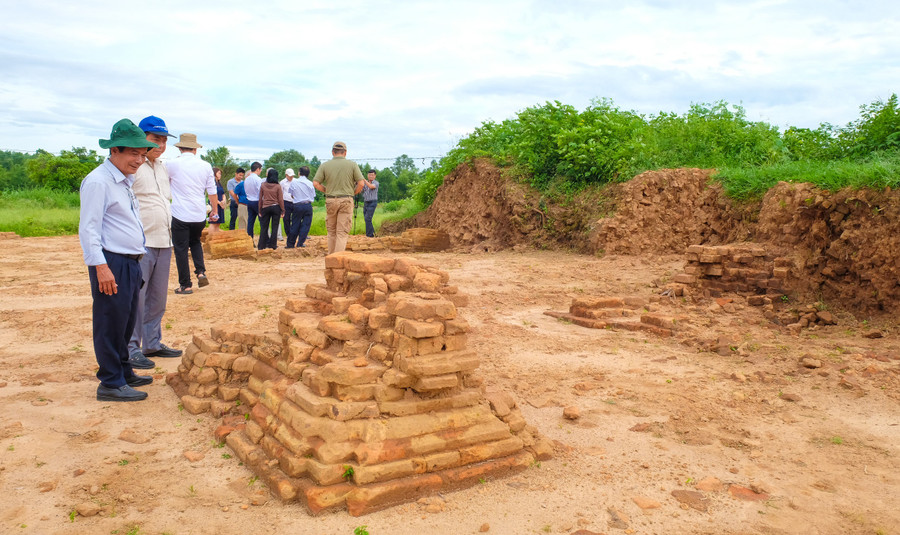
This is an important testament to the construction techniques and decorative arts of the Champa people. The brick structures are diverse, with bricks carved with patterns; in which, the most prominent specimen is a brick carved to form part of a human face, showing special artistic and symbolic value.
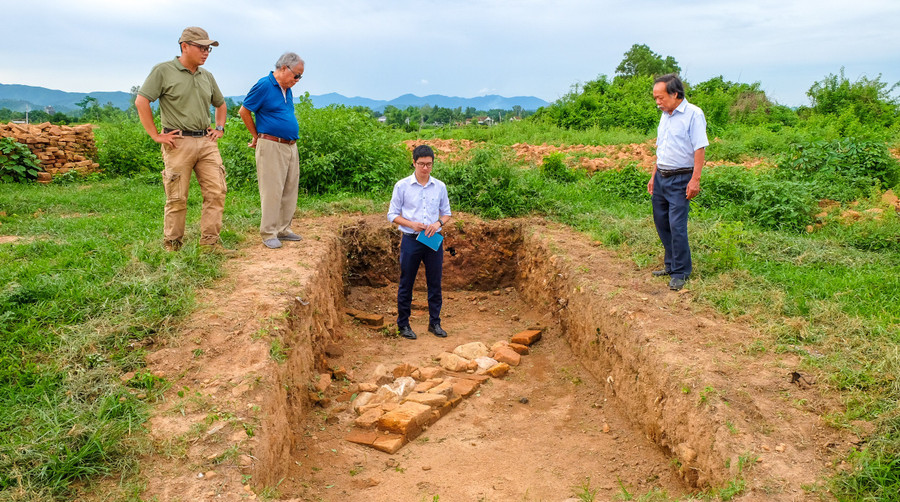
Regarding relics, the number of collected artifacts is up to 17,650, of which the terracotta group accounts for almost the entirety. Tower-building bricks are the most popular type, with more than 14,000 pieces, classified into basic geometric bricks, special technical bricks and bricks with decorative patterns.
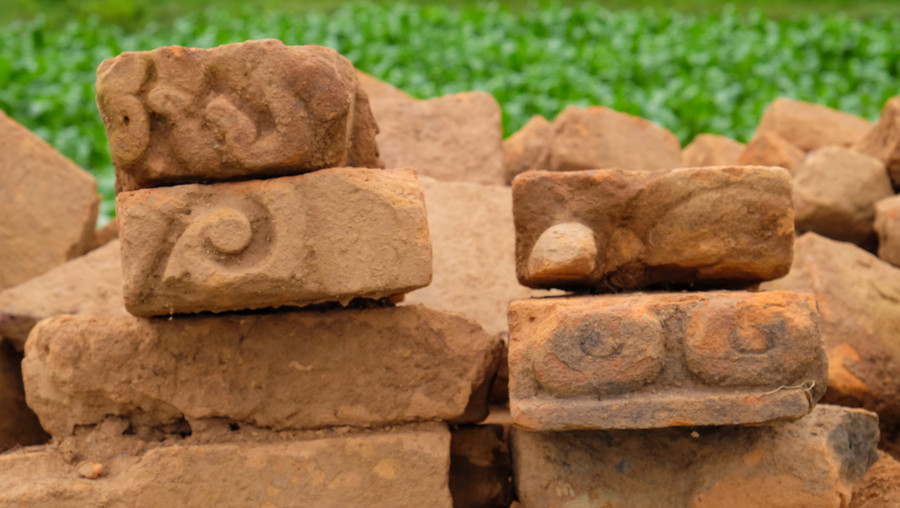
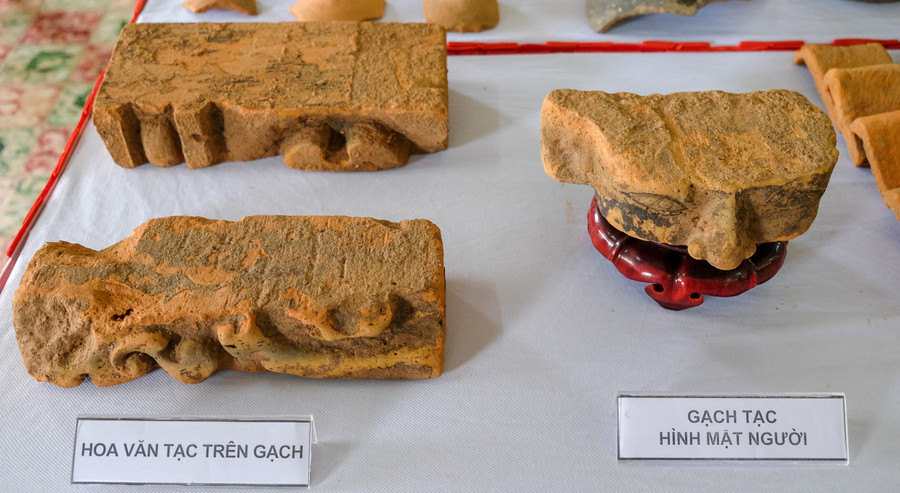
In addition, the archaeological team also discovered more than 3,400 pieces of various types of tiles; of which, leaf-shaped tiles accounted for a large number, along with ridge tiles and cow horn tiles, reflecting the typical roofing technique of Champa.
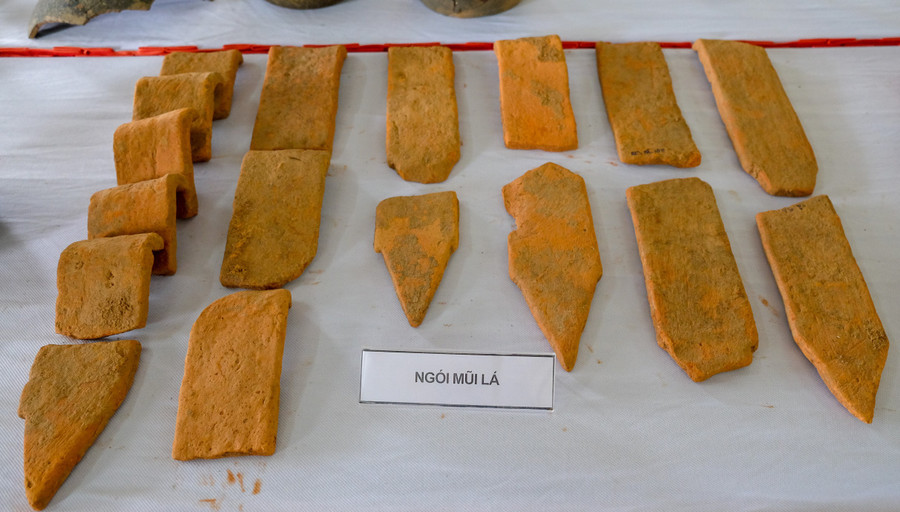
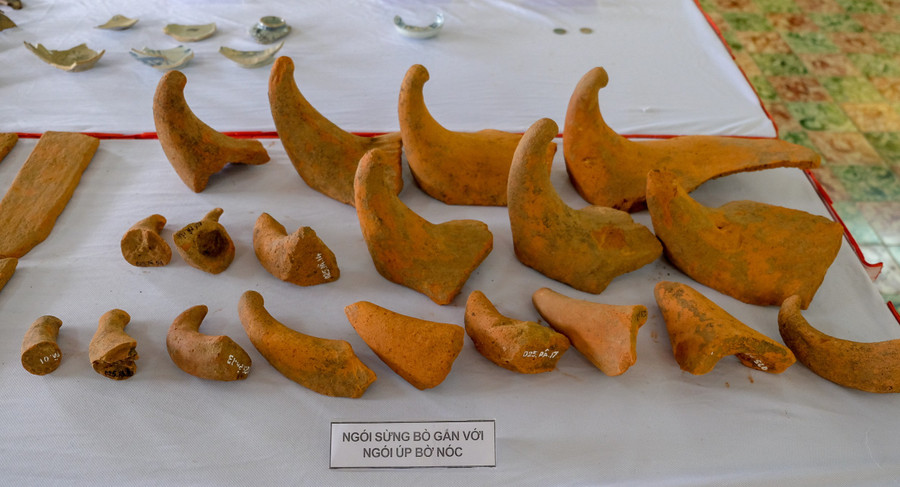
The group of household ceramics discovered also left many marks, including Cham ceramics, Vietnamese ceramics and Chinese porcelain. Most notably, two Northern Song Dynasty bronze coins, dated Jia You (1056 - 1063) and Da Guan (1107 - 1110), and a blue-glazed plate with the inscription "Dai Minh Thanh Hoa nien che" (1465 - 1487) were discovered, which have important documentary value in determining cultural exchanges in the region.
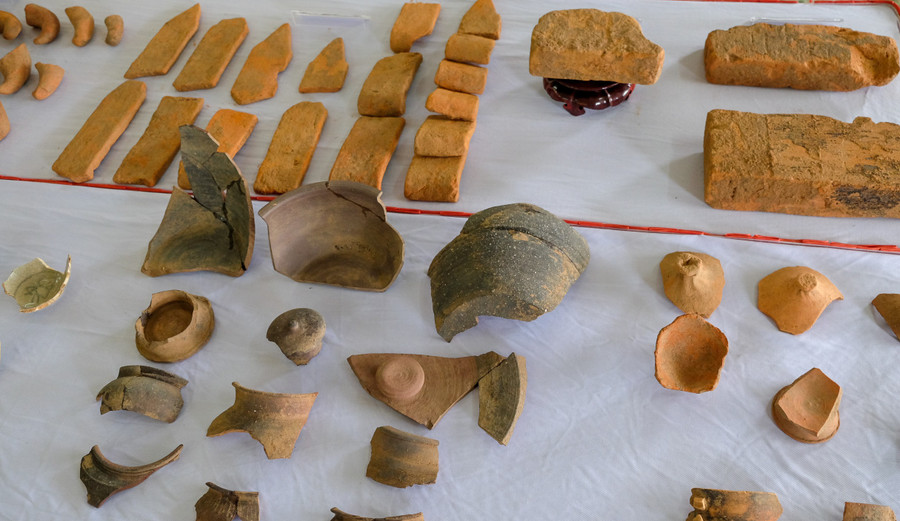
Based on the system of artifacts, researchers initially determined that the Phu An tower ruins were used from the 5th to the 15th century.
Although the main architecture of the tower has not been revealed because the ruins have been severely damaged over time, the discoveries in this excavation contribute to affirming the special value of Phu An tower in the history of Champa architecture.
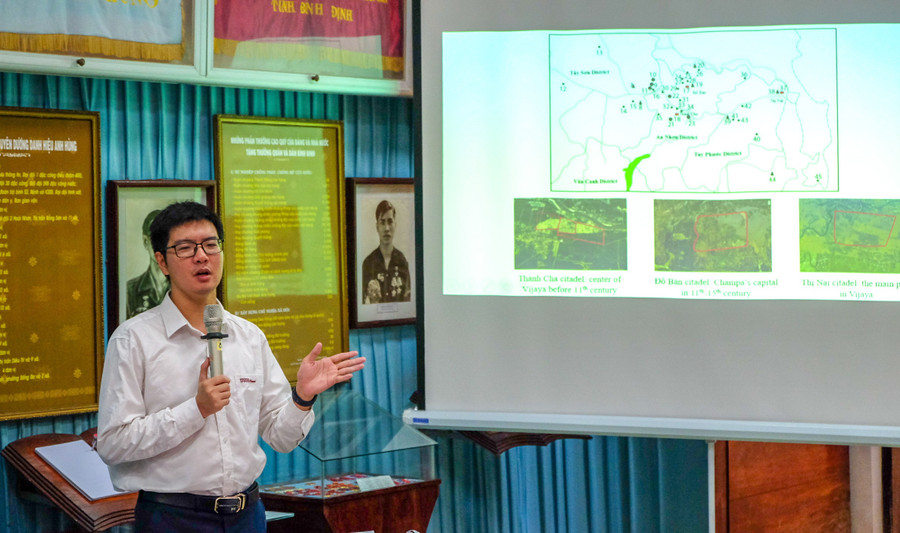
At the reporting session, archaeologists and researchers proposed a number of solutions for the Phu An ruins. Many opinions suggested that the age of Phu An tower could be in the 11th - 12th century; continue to expand the excavation area, especially the facade of the ruins to clarify the tower architecture; soon establish a dossier of the relic to serve as a legal basis for zoning, protecting, preserving and promoting the value of the relic, limiting the encroachment of the relic...
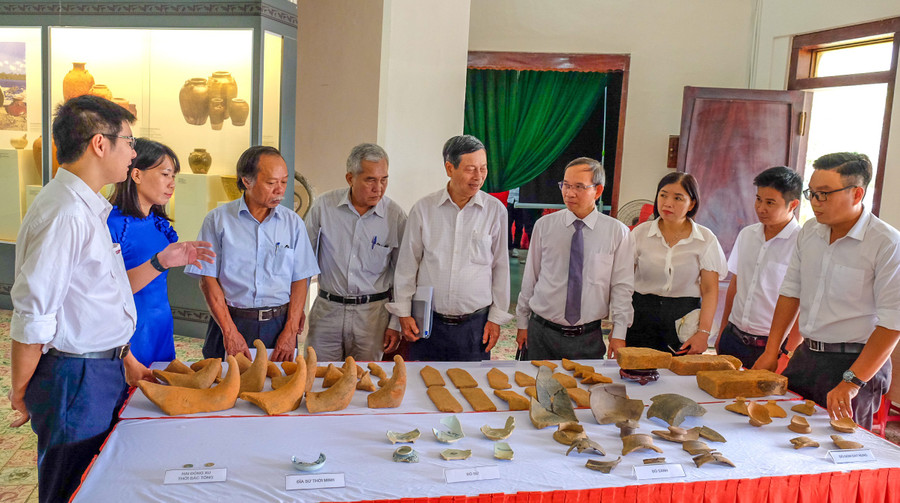
Previously, on the afternoon of September 25, Gia Lai Provincial Museum organized a group to visit the archaeological excavation site to learn and contribute comments for the preliminary report on the excavation of the Phu An tower ruins.
Source: https://baogialai.com.vn/bao-cao-so-bo-ket-qua-khai-quat-khao-co-phe-tich-thap-phu-an-post567648.html





![[Photo] General Secretary To Lam visits Kieng Sang Kindergarten and the classroom named after Uncle Ho](https://vphoto.vietnam.vn/thumb/1200x675/vietnam/resource/IMAGE/2025/10/09/1760023999336_vna-potal-tong-bi-thu-to-lam-tham-truong-mau-giao-kieng-sang-va-lop-hoc-mang-ten-bac-ho-8328675-277-jpg.webp)

![[Photo] President Luong Cuong attends the 80th Anniversary of the Traditional Day of Vietnamese Lawyers](https://vphoto.vietnam.vn/thumb/1200x675/vietnam/resource/IMAGE/2025/10/09/1760026998213_ndo_br_1-jpg.webp)
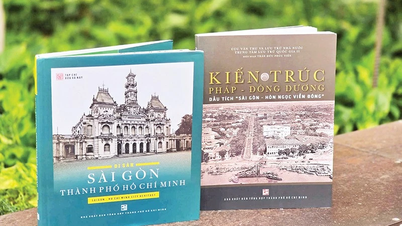







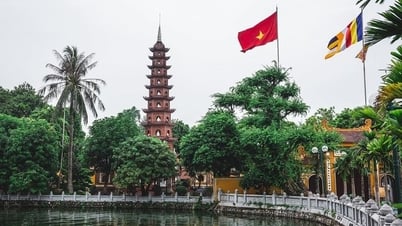




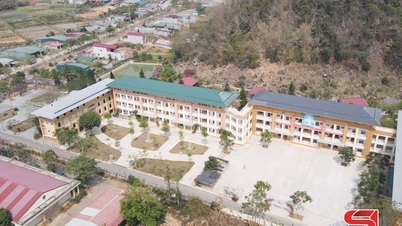






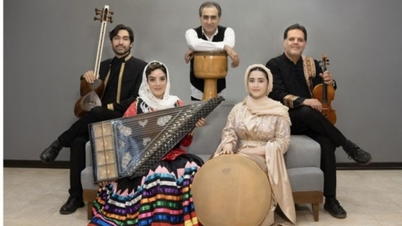


















































































Comment (0)